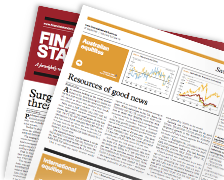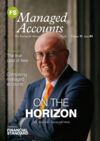Australia's financial adviser crisis: Can a return to commissions help bridge the advice gap?BY BRENDAN GOW | FRIDAY, 6 JUN 2025 12:47PMAustralia faces a financial advice crisis with profound consequences for households and the economy alike. In 2019, more than 26,000 licensed advisers served the financial needs of everyday Australians. Today, that number has decreased to around 15,500 - a notable decline over the past five years, as regulatory reforms and perceived higher education barriers have impacted the profession. If current trends persist, projections suggest we could see a further reduction in advisers by 2044, potentially leaving Australians with less access to personalised financial guidance. This crisis has manifested at a time when economic uncertainty and cost-of-living pressures are mounting. Fewer advisers means millions are left to navigate this uncertainty and their financial futures unaided. Studies repeatedly show that those who receive advice are better equipped to weather financial shocks, accumulate assets, and plan confidently for retirement. Yet, today, just one in ten Australians receives formal advice, and as much as $3.6 trillion in household assets remain unmanaged by professionals. The "advice gap" is widening, threatening our collective resilience and long-term prosperity. So, how did we get here? Much of the industry's current difficulties can be traced back to the Hayne Royal Commission (2017-2019), which exposed serious instances of conflicted remuneration, poor advice, and a significant decline in consumer trust. While these reforms were undoubtedly necessary to restore credibility, they came at a cost: running a compliant financial advice business has become an expensive endeavour and involves unavoidable fixed costs such as salaries, software, and licensing fees, placing financial planners in a position where they must often focus on serving more profitable clients with higher asset volumes. This arises because the cost of providing advice remains relatively fixed, regardless of the client's wealth, making it economically unfeasible to manage clients with smaller balances. Consequently, many advisers are choosing to work with a more specialised client base that generates higher revenue, balancing the need to justify fees with the value of their services. Now, the industry finds itself at a crossroads. Do we double down on fee-for-service, or is there a case for reviving commission-based structures, albeit with greater transparency and safeguards? Could a new commission model attract needed talent? Properly designed with the right framework, commission-based models can play a role in revitalising the profession and broadening access, especially for Australians currently priced out of advice. There's a persistent misconception that conflicts of interest under a commission model are inherently toxic. In reality, conflicts exist under any remuneration arrangement but what matters is how they are identified, disclosed, and managed. The Australian Adviser Exam and decades of professional experience affirm this: transparency and client understanding are key. Clients generally want their adviser to be paid fairly for their expertise and ongoing support. For new entrants and those serving "everyday" Australians with smaller balances, commissions can make advice viable again without imposing high upfront fees. Of course, it would be unwise to simply return to the past. Instead, what's needed is an open, evidence-based conversation about modernising remuneration frameworks. Can we build commission-based systems with strong disclosure, true alignment to client outcomes, and robust oversight? The answer is yes - and if done right, this could be pivotal in attracting talented, empathetic professionals back into the fold. Is fixing fee-for-service or salaried models the answer? The shortfalls of a "one size fits all" model in a sector as diverse as financial advice are clear. Fee-for-service and salaried models, in theory, maximise independence and transparency, but in practice, they make serving average Australians challenging, especially for newer advisers without an existing client book or specialists working in regional areas. A path forward lies not in choosing between models, but in building flexibility. A hybrid remuneration model that combines a base salary with structured, transparent incentives linked to client outcomes could provide both sustainability for advice businesses and aspirational career growth for advisers. Such models can empower advisers to serve a broader spectrum of clients without sacrificing professionalism or independence. If we're to retain, train, and grow a pipeline of diverse talent, reimagining what "fair reward" means is essential. How do we engage younger talent? Contrary to existing industry commentary, the challenge isn't that education standards are too high - they are, in fact, fit for purpose for a profession entrusted with Australians' life savings. It's essential to keep the bar high to safeguard the sector's integrity. It's important that we resist the temptation to dilute these standards in the name of short term growth. Rather, the profession struggles to communicate the rewards, satisfaction, and impact of a career in advice. Instead, our focus should be on better communicating the long term value and career benefits of being a financial adviser. Aspiring advisers need to see the bigger picture: making a tangible difference in clients' lives, enjoying real autonomy, and building a financially rewarding career. The onus is on the industry to better showcase these advantages, not seek shortcuts by diluting standards. What can we do to improve as an industry? There is, however, scope for practical improvements:
The role of technology as a force multiplier This is where the profession can evolve most rapidly. If the financial advice sector is to scale and serve more Australians meaningfully, its future lies in the use of technology. Advisers should embrace artificial intelligence and automation. AI-driven paraplanning, automated compliance checks, and digital client management systems have the potential to halve the administrative load. That means more time where it counts: building relationships, creating plans tailored to unique circumstances, and delivering value clients can see. Technology, properly harnessed, will support advisers to serve more clients efficiently - especially younger, digitally native Australians who might otherwise forgo advice. The way forward Australia's financial advice sector stands at a pivotal junction, grappling with a shrinking workforce and an ever-widening advice gap that risks leaving millions without critical support for their financial futures. The evidence is clear: access to professional advice matters deeply for household prosperity and broader economic resilience, especially during periods of heightened uncertainty. While historical reforms were necessary to restore trust, they have inadvertently narrowed access - highlighting the need for new, flexible solutions. The recommendation is not to revert blindly to old commission models, but to enable a hybrid remuneration framework that blends salary, transparent incentives, and strong oversight to expand access while maintaining high professional standards. This approach coupled with practical regulatory improvements, recognition of prior learning, and the adoption of technology, can reinvigorate the industry, attract a new generation of talent, and ensure every Australian has the opportunity to receive quality, tailored financial advice. |
Latest News
ASIC funding levy to charge advisers $46.2m
ASIC releases new relief for reportable situations regime
TA Associates invests in Viridian Financial Group
Shaw and Partners splashes $63m for New Zealand expansion
Cover Story

Moving mountains
FOUNDER & FINANCIAL PLANNER
MAZI WEALTH
























Whole-heartedly agree, we need to explore the ideas in this article. The means of remuneration should never have been the issue, the solutions focused too much on the "how" and not the "why".